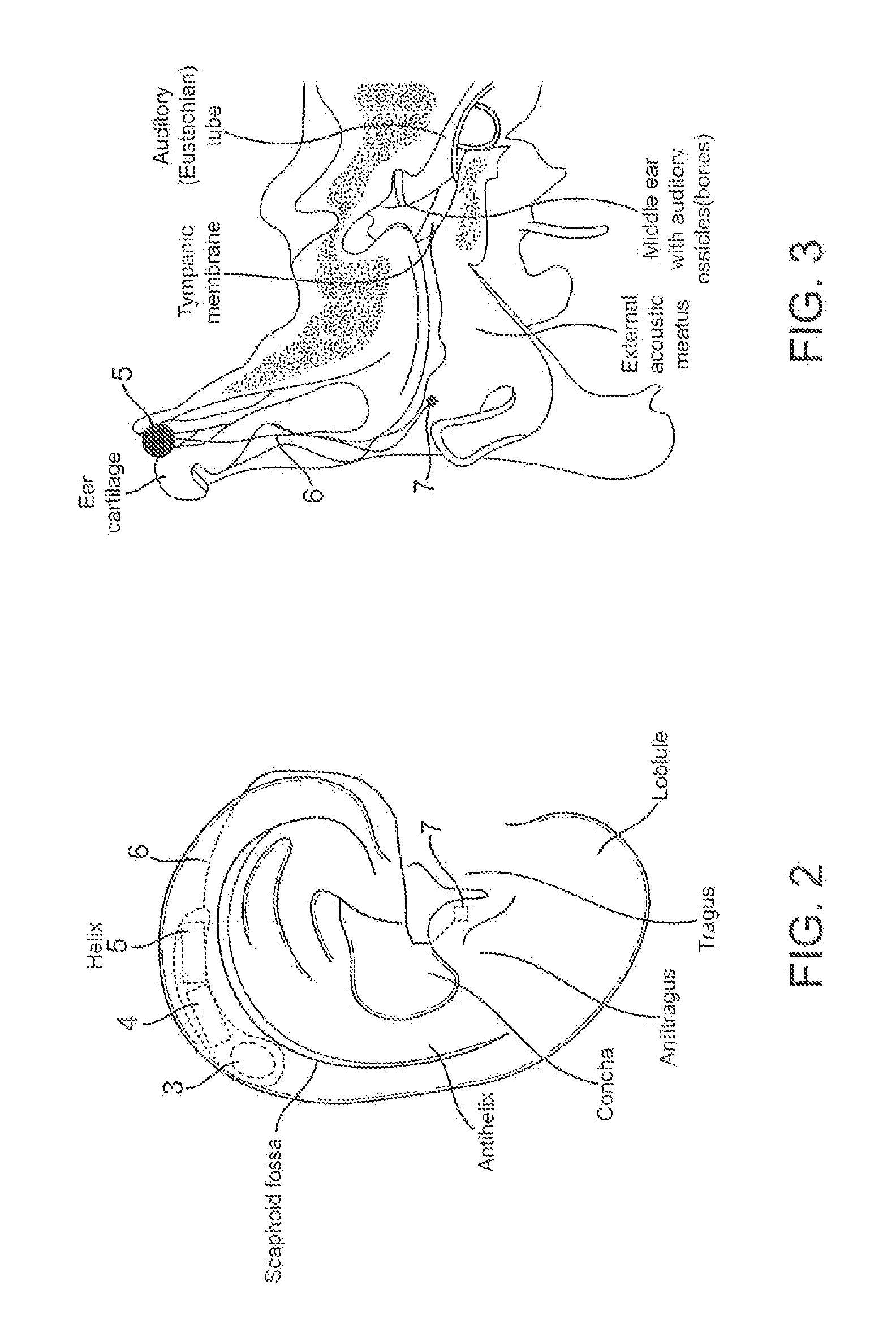Bone conduction hearing device with open-ear microphone
a hearing device and microphone technology, applied in the direction of transducer casings/cabinets/supports, electrical transducers, transducer casings/cabinets/supports, etc., can solve the problems of ear infection, noise signal contamination, attenuation of signals, etc., to achieve optimal sound localization (and directionality), natural sound input, and high quality sound input
- Summary
- Abstract
- Description
- Claims
- Application Information
AI Technical Summary
Benefits of technology
Problems solved by technology
Method used
Image
Examples
Embodiment Construction
[0032]FIG. 1 shows an exemplary ear canal mounted hearing sub-systems 1 and 2. The system of FIG. 1 processes sound signals from each of two microphones 7. The microphones 7 are placed either at the opening or directly with the user's ear canals. Each of the systems 1-2 includes a battery 3, a signal processor 4, a transmitter 5, all of which can be positioned in a housing that clips onto the ear which rests behind the ear between the pinna and the skull, or alternatively can be positioned in the ear's concha. The transmitter 5 is connected to a wire / antenna 6 that in turn is connected to the microphone 7.
[0033]Each transmitter 5 transmits information to a receiver 8 that activates a transducer 9 that is powered by a battery 10. Each side of the head can have one set of receiver 8, transducer 9 and battery 10. This embodiment provides a bone conduction hearing aid device with dual externally located microphones that are placed at the entrance to or in the ear canals and an oral appl...
PUM
 Login to View More
Login to View More Abstract
Description
Claims
Application Information
 Login to View More
Login to View More - R&D
- Intellectual Property
- Life Sciences
- Materials
- Tech Scout
- Unparalleled Data Quality
- Higher Quality Content
- 60% Fewer Hallucinations
Browse by: Latest US Patents, China's latest patents, Technical Efficacy Thesaurus, Application Domain, Technology Topic, Popular Technical Reports.
© 2025 PatSnap. All rights reserved.Legal|Privacy policy|Modern Slavery Act Transparency Statement|Sitemap|About US| Contact US: help@patsnap.com



